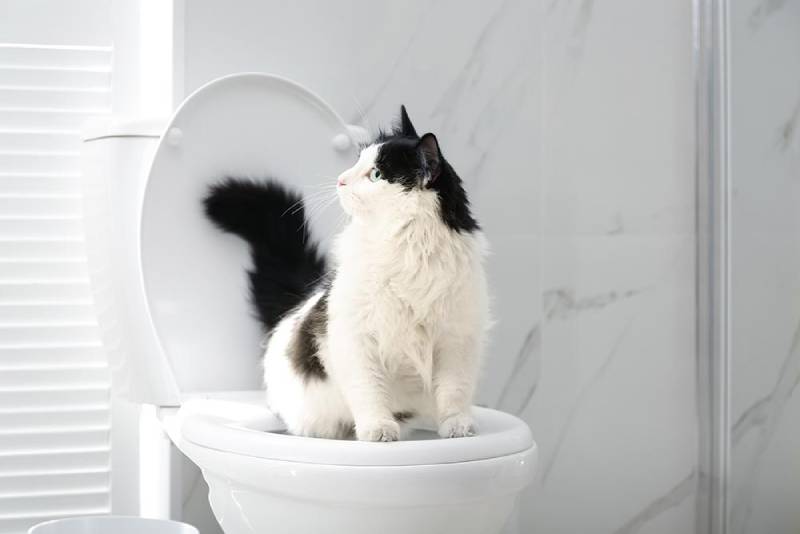Potential Risks of Flushing Cat Poop Down Your Toilet - Tips for Better Disposal
Potential Risks of Flushing Cat Poop Down Your Toilet - Tips for Better Disposal
Blog Article
We have come across this post on How to Dispose of Cat Poop and Litter Without Plastic Bags listed below on the web and thought it made perfect sense to share it with you on this page.

Introduction
As feline proprietors, it's important to bear in mind exactly how we throw away our feline good friends' waste. While it might seem hassle-free to purge feline poop down the toilet, this technique can have damaging consequences for both the setting and human health and wellness.
Ecological Impact
Flushing pet cat poop presents dangerous virus and bloodsuckers right into the water system, posturing a substantial danger to aquatic environments. These contaminants can adversely influence marine life and concession water quality.
Health and wellness Risks
In addition to environmental issues, flushing pet cat waste can additionally pose health risks to humans. Cat feces may contain Toxoplasma gondii, a parasite that can trigger toxoplasmosis-- a potentially severe illness, particularly for pregnant women and people with weakened immune systems.
Alternatives to Flushing
The good news is, there are more secure and much more responsible methods to deal with pet cat poop. Think about the following options:
1. Scoop and Dispose in Trash
The most usual method of dealing with feline poop is to scoop it into an eco-friendly bag and throw it in the trash. Make certain to use a specialized clutter inside story and throw away the waste without delay.
2. Usage Biodegradable Litter
Opt for biodegradable cat trash made from materials such as corn or wheat. These trashes are environmentally friendly and can be securely gotten rid of in the garbage.
3. Hide in the Yard
If you have a lawn, take into consideration burying cat waste in an assigned area far from vegetable gardens and water sources. Be sure to dig deep enough to avoid contamination of groundwater.
4. Mount a Pet Waste Disposal System
Invest in an animal garbage disposal system particularly created for pet cat waste. These systems make use of enzymes to break down the waste, reducing smell and ecological effect.
Conclusion
Liable pet possession expands beyond providing food and shelter-- it additionally includes correct waste management. By refraining from purging pet cat poop down the toilet and opting for alternative disposal methods, we can lessen our ecological impact and shield human health.
Why You Should NEVER Flush Cat Poop (and/or Litter) Down Your Toilet
The Problem with Litter
The main function of litter is to solidify and adhere to your cat’s waste. While this makes litter excellent for collecting cat poop and urine, it’s also the exact property that makes it a nightmare when flushed down the toilet.
Cat litter can and will clog pipes. There is non-clumping litter, but it’s still quite heavy and can build up in pipes. This is true even of supposed “flushable litter.”
The problems only compound when the litter is already clumped into cat waste. Toilet paper is among the more flushable things, and even too much of that will clog a toilet.
The Problem with Cat Poop
Sewers and septic systems are designed with human waste in mind. The microbes that help break down human waste don’t work on cat waste. Additionally, cat poop plays host to the parasite Toxoplasma gondii.
When flushed, this parasite can enter the environment in places it was never meant to, posing a risk to pregnant women, their unborn children, and other people with compromised immune systems. While it might not seem possible, flushing cat poop can indeed introduce this parasite to the public water supply.
These reasons are why, even if you’ve trained your cat to go on the toilet and flush, which is possible, it’s still not a good idea. Also, pregnant women and the immunocompromised shouldn’t change litter, either.
How to Handle Litter
The best way to handle litter is to simply put it in a plastic bag and place it in the trash. Avoiding environmental risks and possible plumbing damage is worth the extra effort.
You can also invest in devices that seal away your cat’s waste in a separate compartment, so you don’t have to change the litter nearly as often. They’re also safer for pet owners because they limit the possibility of Toxoplasma gondii exposure.
Disposing of litter the old-fashioned way will ensure you won’t have to worry about any issues that flushing the waste can potentially cause.
Take Care of Clogged Pipes with Stephens Plumbing, Heating & Air Conditioning
The reasons you should never flush cat poop down your toilet are numerous, but sometimes the inevitable happens despite your best efforts.
Stephens Plumbing, Heating & Air Conditioning is ready to help if you’re experiencing litter-blocked plumbing. Whether you need us in an emergency or want to schedule regular maintenance, we’re here for you.
https://www.stephensplumbing.net/bathroom-plumbing/never-flush-cat-poop-down-your-toilet/

We had been shown that report on Can You Flush Cat Poo or Litter Down the Toilet? from a friend on another domain. Feel free to take a moment to promote this blog if you liked it. We cherish reading our article about How to Dispose of Cat Poop and Litter Without Plastic Bags.
Click Here Report this page